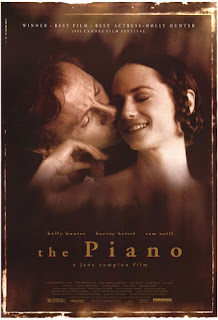May 12th: UNTIL THE END OF THE WORLD (Wim Wenders, 1991)
As a nuclear satellite threatens to crash land on Earth, a party girl and a man with a top secret invention hop from country to country on the run from criminals and the CIA.
Wim Wenders is one of the key figures of the New German Cinema, which began in the late 1960s and includes Werner Herzog and Rainer Werner Fassbinder. He soon became known for his "road movies" and his fascination with American pop culture (particularly rock and roll), eventually forming friendships with influential directors Samuel Fuller and Nicholas Ray. His breakthrough came at the Cannes Film Festival with his Palme d'Or-winner Paris, Texas, and arthouse fantasy Wings Of Desire.
For over ten years Wenders developed what he considered the "ultimate road movie", collaborating with French-German actress Solveig Dommartin, American indie filmmaker Michael Almereyda, and Australian writer Peter Carey before a script was completed. In addition to having a plot with action that spanned the globe, Wenders also set the story 10 years into the future.
Acting alongside Dommartin are American actor and Oscar winner William Hurt, cinema legends Max von Sydow (The Exorcist) and Jeanne Moreau (Jules and Jim), Australian actor Sam Neill (Jurassic Park), Indigenous Australian actor David Gulpilil (Walkabout), and Wenders film veteran Rüdiger Vogler.
Headed by Wenders' longtime cinematographer Robbie Müller, the film was shot in 15 cities in 7 countries across North America, Asia, Europa, and Australia (a plan to film in the Congo in Africa was cut due to budgetary issues). Crew members outside the main core would be hired in each location.
To help create a believable atmosphere of his futuristic story, Wenders enlisted help from a number of musical artists, asking them to create recordings they might be doing 10 years later. He received new/unreleased tracks from modern rock luminaries such as Lou Reed, Patti Smith, U2, R.E.M., Depeche Mode, Nick Cave, Elvis Costello, and Talking Heads, among others.
Prototypes of new electronics were provided by Sony for use in the film to complement the designs envisioned by Wenders and his team. Video phones, interactive cars, and an early version of the internet are present in the film. In addition, Wenders was able to experiment with the first HDTV cameras to provide hallucinatory imagery for certain parts of the film.
Due to contractual obligations, Wenders was required to turn in a normal theatrical length edit of his film, which ran close to 2.5 hours. Wisely making a copy of the negative with his own money, he kept editing and completed a longer cut he hoped to release in three separate installments. While the film's soundtrack was a hit, its failure at the box office and mixed critical reception left no demand for his epic version, which has only been screened rarely and is only available on home video in a few countries.











Comments
Post a Comment